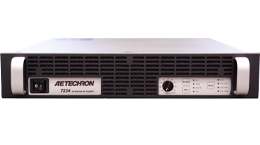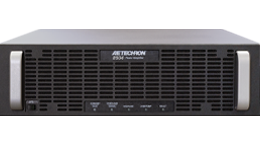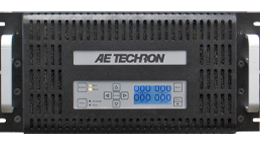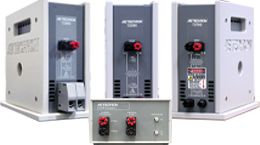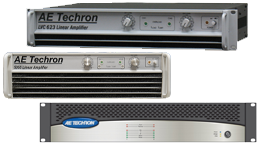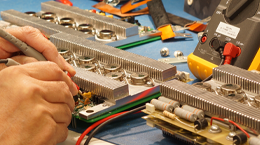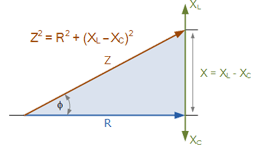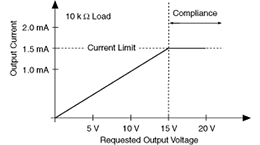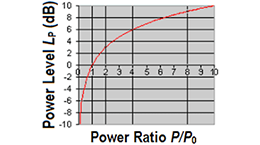In the pursuit of more efficient and powerful electronic devices, switch-mode power amplifiers (SMPAs) have emerged as a frontier of innovation. As modern technologies demand higher performance, better efficiency and lower power consumption, the evolution of SMPAs has received significant attention. But there has been one common problem with these amplifiers, specifically that they are too slow for some applications.
That may have been true a few years ago, but there are several recently introduced switch-mode amplifiers that address this historical issue. In this article we will delve into the exciting advancements made in the realm of SMPAs, highlighting the remarkable progress achieved in increasing bandwidth and its implications across industries.
An Overview of Linear Amplifiers
To fully appreciate the advantages of switch-mode amplifiers, it is helpful to first review how a linear amplifier functions. Linear amplifiers use their output transistors to reduce the voltage of the DC power supply much like the way a dropping resistor reduces the voltage in a circuit. The resistance in the transistor turns the excess voltage into heat. While this creates a fast and accurate amplifier, it also makes these amplifiers inefficient and the structures (heat sinks) required to dissipate the heat make the systems large.
Because of their speed and precision, they are widely used in applications that require accurate signal reproduction and minimal distortion or very high frequencies. Examples include RF transmitters, medical equipment, and instrumentation in research labs.
Linear amplifiers work best when driving loads that are resistive. When loads become inductive or capacitive, returned power needs to be turned into heat to be dissipated. This further decreases efficiency and causes long-term power output to be reduced.
When frequencies increase, linear amplifiers can suffer from various parasitics, like shoot through currents, that further reduce their efficiency and maximum power capabilities.
Switch-Mode Amplifiers Benefits and Limitations
Switch-mode power amplifiers were initially created to address the inefficiencies of traditional linear amplifiers. The basic concept of a switching amplifier is to replace the dissipative strategy of the linear amplifier with a rapidly switching transistor that is either on or off. They achieve the desired output voltage by varying the average on or off time of the output transistor, then use a low pass filter to reduce the noises associated with the actual switching. This approach created an amplifier that was typically 2x more efficient, less expensive, and smaller than linear amplifiers.
But these advantages come with some limitations. Silicon-based transistors have limits to how fast they can switch. Transistors with die sizes large enough to handle significant power limit switch-mode amplifiers to bandwidths of 5kHz or lower. These low frequencies come with a second problem, the components used to create the low pass filter need to be larger, sometimes taking up 30% of the total system volume.
Wide Bandgap Transistors
In recent years there has been a great deal of research into new transistor types as one way to address bandwidth limitations of SMPAs. Specifically, transistors based on gallium nitride (GaN) and silicon carbide (SiC) have received a lot of press and do hold promise for increased switching speeds, which would in turn address switch-mode frequency limits and switching noises. But both technologies are early in their adoption, which brings with it several problems.
The first is the lack of standardized package format. This forces potential product designers who want to use these parts to choose a single vendor, then develop a PCB layout and heatsink mounting design that is specific for mounting their output transistors. Being single sourced for such a system critical component, leaves the amplifier manufacturer with a short-term risk of long lead times and expensive component prices without any options. This also poses a long-term risk should that package style not be adopted as the eventual standard, they may still have to redesign their product again to match the eventual “standard” package format (i.e. VHS vs Beta).
Achieving Faster Speeds with Present Parts
Given these issues, is it possible to achieve faster speeds, with today’s parts? Several manufacturers (IECO in MRI, the Crown Brand of Harmen amplifiers in Pro Audio, among others) have used a technic called interleaving. In an interleaved system output transistors are combined in a pair, then turned on at precise time offsets to achieve the effect of a switching frequency that is double the switching speed of the individual transistor.
With this technique, they have been able to push operating bandwidths up to as high as 20kHz. This is useful for audio, but many other applications require still higher bandwidths.
Pushing boundaries by increasing the interleave past two sets of transistors holds the promise of even wider bandwidths, but this concept has proven to be challenging to implement. With each increase in the number of paired transistors comes an increase in the precision needed for all parts in the system to switch at the exact right time and amplitude. Even slight variations in amplitude or time will cause the benefits of interleaving to disappear. Recently AE Techron has succeeded in combining multiple sets of transistors, using this interleave concept, to create amplifiers like the AE Techron 8704 and 9100 series with upper frequency limits up to 250kHz.
New Possibilities
Wideband switch-mode amplifiers, when compared to other present wide bandwidth amplifier options, can be up to 80% less expensive, less than half the weight, and physically much smaller in size. These improvements hold the promise of enabling many interesting new products and technologies. Product ideas that, before now were only interesting concepts, have now become economically viable and physically practical. It will be very interesting to see what industry and academia does with these new capabilities.









